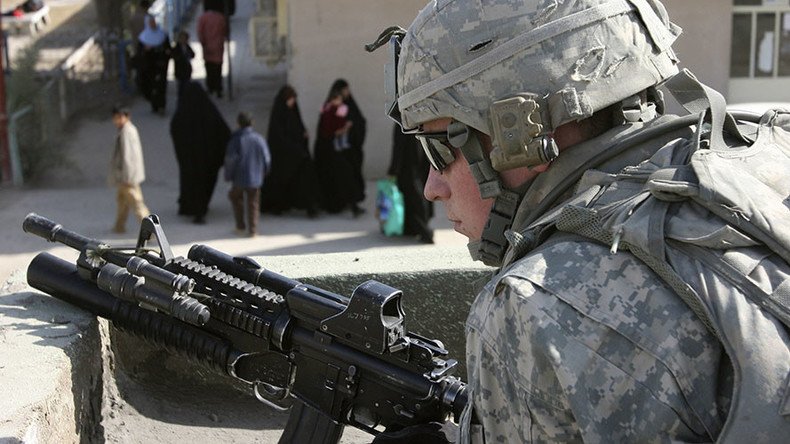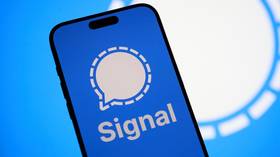Spies over Baghdad: NSA newsletter reveals agency’s role in Iraq War

NSA intelligence played a key role in preparing the UN for the US invasion of Iraq and aiding the subsequent occupation, while senior agency officials even met with interrogators at the notorious Abu Ghraib prison, internal documents show.
The agency’s activities in Iraq were chronicled in the Signals Intelligence Directorate (SID) newsletter, SIDtoday. Issues of the newsletter dating from March 2003 to 2012 were contained in the trove of information collected by former NSA contractor-turned-whistleblower Edward Snowden. The first batch of 166 documents was published by The Intercept on Monday.
“SIGINT support to the US Mission to the United Nations has enabled and continues to enable the diplomatic campaign against Iraq,” Chris Inglis, deputy director for analysis & production, wrote in SIDtoday. “Your efforts have been essential to the plans of the US Permanent Representative to the UN, Ambassador John D. Negroponte, as well as to the United Kingdom's Permanent Representative, HMA Sir Jeremy Greenstock.”
Greenstock thanked the NSA for offering “insights into the nuances of internal divisions” among the five permanent members of the UN Security Council, calling it “highly useful,” Inglis noted. (Support to UN Diplomatic Efforts on Iraq, April 7, 2003)
“Timely SIGINT played a critical role” in the unanimous adoption of two UN Security Council Resolutions, another article said. Resolution 1441, adopted in November 2002, said Iraq was in breach of the 1991 ceasefire, demanding the return of weapons inspectors expelled after the 1998 US bombing. Resolution 1472, adopted in March 2003, re-started the oil-for-food program under UN management that had been suspended on the eve of the invasion.
The NSA doubled the overall volume of signals intelligence provided to the US delegation to the UN during the run-up to the invasion of Iraq, and quadrupled the amount of information delivered at key times, prompting Negroponte to say “I can't imagine better intelligence support for a diplomatic mission,” according to the newsletter. (A Perspective on the NSA/ USUN Partnership, April 23, 2003)
After the invasion began in March 2003, the NSA provided “24/7, near-real-time intelligence to coalition forces in Iraq.” The Geospatial Exploitation Office (GEO) launched a website that enabled NSA “customers” in the US and in the theater of war to “select, view and analyze geo-location data on Personal Communications Systems (PCS) activity in and around Iraq,” the GEO chief wrote. The office also provided identification and tracking of chief PCS users in Iraq to the attacking US forces. (GEOCELL Supports IRAQI FREEDOM, April 3, 2003)
Rescue and capture
After the capture of Private Jessica Lynch, the NSA looked into its archives and found a November 1979 report that the hospital where she was held in An Nasiriyah had been built by a Japanese company, the newsletter reveals. (SID Support to POW Rescue, April 14, 2003)
The Pentagon requested blueprints of the hospital from the Japanese, and launched the rescue operation when the NSA confirmed that Lynch was at the hospital on March 27. “The NSA monitored all hostile cell phones in the area during the rescue,” wrote SID Chief of Staff Charles Berlin.
NSA intelligence was “instrumental in the identification and subsequent apprehension” of Aziz Salih Al-Numan, a senior Ba’ath party official designated by the US as 'The King of Diamonds’ in the infamous “Iraqi Most Wanted” card deck. ("King of Diamonds" Apprehended in Iraq, June 23, 2003)
“Near-real-time” information the GEO provided to US Special Forces made possible the capture of Mahmud al-Tikriti, or the ‘Ace of Diamonds’, on June 17, 2003. Linguists from two other SID “product lines” provided information on the identity of speakers and contents of intercepted conversations, “adding key context information to the location data being sent forward.” (Another Top Iraqi Captured, June 27, 2003)
Not all was coming up roses in Iraq, however. One article in the newsletter described eight separate incidents in which US troops were ambushed or attacked on June 14, which was described as a random, average day in the occupied country.
“This may seem to be a large number of incidents, but this is actually representative of an average day— and since there were no U.S. fatalities, it could be considered a ‘good’ day,” the article said, adding, “Over 50 US soldiers have been killed since the official end of the war on 1 May, and the Coalition forces average almost 4 wounded per day.” (24-hours in Iraq, June 24, 2003)
NSA interns lectured on their first day: “The only thing you need to know is that we don’t talk in the elevators." https://t.co/e1YCL5lfTY
— The Intercept (@theintercept) May 17, 2016
A visit to the ‘torture chambers’
Just two days later, SIDtoday carried a report about the SID Director, Major General Richard J. Quirk III, visiting Baghdad to meet with “our customers and partners as well as our deployed personnel.” The report contained a photo gallery, including the following caption:
“At Abu Ghurayb prison, the group discussed the role of interrrogations [sic] and how they can provide leads for SIGINT. They also visited one of Saddam's torture chambers.”
In what must have been a typo, the report said that the visit took place in “mid-November.” (MG Quirk Leads Group to Iraq, by Iraq Issue Manager, June 26, 2003)
By November 2003, US media began mentioning reports of “massive human rights abuses” at the facility, now spelled Abu Ghraib. Photos of the abuse and torture of prisoners emerged in April 2004.














